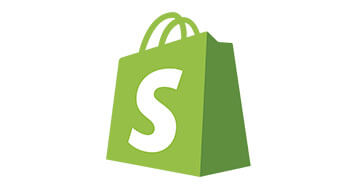What is Shopify?
Shopify is an ecommerce platform that helps individuals and enterprise businesses build and manage their business online and in person, without needing technical expertise.
Founded in 2006, Shopify powers millions of businesses globally, making it one of the most widely used ecommerce platforms.
With features such as customizable storefront, inventory management, shipping logistics, and payment processing, Shopify is a great choice for businesses looking to start or expand their online business.
Quick Overview of Shopify
| Overview | Shopify |
|---|---|
| Starting price | $29/mo |
| Free Trial | Yes, it has a 3-day free trial |
| Key Features | – Online store and website builder, – POS, – Inventory management, – Marketing tools and analytics, – Multichannel selling, – Commerce App catalog, – Ecommerce automation. |
| Best for | Small to Large Businesses, Entrepreneurs, DTC Brands, Dropshippers, Agencies |
| Customer support | 24/7 Live Chat & Email, Help Center, Community Forum, Dedicated Support (higher tiers) |
| Automation | – Email marketing – Order fulfillment – Inventory management |
| Integration | Integrates with 8,000 apps, including: – Google & YouTube – TikTok – Facebook & Instagram – Amazon – DSers – Snapchat – Klaviyo |
| Scalability | Yes, its flexible payment plans and infrastructure scale with business growth |
| Customization | Yes — Themes, Templates, Workflows, Storefront, Apps, Code (via Liquid) |
Pros and Cons of Shopify
Pros
- Easy to use: Shopify’s commerce platform has a user-friendly interface that makes it easy to customize storefronts, add products, and manage your online store.
- Fully-loaded features: Shopify provides access to advanced features such as inventory management, analytics, marketing, multiple sales channel integrations, and ecommerce automation that make your online store fully functional.
- Extensive integration capability: Shopify has a multitude of apps, software, and marketplace integrations that make it easy to run a profitable ecommerce business.
- Professional platform design: Shopify provides modern, mobile-responsive themes, customizable templates, and design tools that help create visually appealing websites.
- Good content management system: Updating content like product listings, descriptions, categories, and blog posts is simple and flexible with Shopify.
Cons
- Software package is costly: Shopify is pricier than some competitors, especially for small businesses, but its powerful features, such as intuitive design, secure checkout, extensive app ecosystem, and scalable infrastructure, justify the cost. A 3-day free trial and $1/month for the first three months help ease the start. While long-term costs are higher, it offers strong value for growth-focused businesses.
Shopify Pricing
Shopify pricing is competitive and has robust features.
The platform offers a 3-day free trial and a special promo of $1/month for the first three months, making it easily accessible for individuals looking to start an online business.
Its four-tier plan offers discounts of up to 25% on the annual billing option*, making it cost-effective for long-term use.
| Pricing Plan (USD) | Annual Plan* | Monthly Plan | User Limit |
|---|---|---|---|
| Basic | $29 | $39 | 1 staff account |
| Grow | $79 | $105 | 5 staff accounts |
| Advanced | $299 | $399 | 15 staff accounts |
| Plus | Starting at $2,300/month on a 3-year term | Starting at $2,300/month on a 3-year term | Unlimited |
*Yearly discount available on select plans.
Shopify Key Features
Online Store and Website Builder
With Shopify’s website builder, you can build your online store from scratch using its drag-and-drop editor to create web pages, rearrange sections, and tweak your layout with ease.
Get started quickly with a collection of expert-designed themes to customize to your liking, or you can generate a personalized website using its AI-powered web builder.
To personalize your website appearance, you can easily adjust fonts, colors, and styles to complement your brand identity across your entire website.
And because first impression matters, Shopify ensures your site is well optimized with a mobile-responsive design by default.
From SEO-optimized pages to a built-in blogging system and domain management, Shopify gives you everything you need to get online and get noticed fast.
POS
Shopify connects your online and in-person sales with a POS system that allows you to sell across multiple locations.
You can manage inventory, scan products, process payment, track orders, and serve customers from any location using the Shopify POS app.
Shopify POS also supports sales events and pop-ups and offers flexible fulfillment options like buying in store, ship to home, or buy online and pick up in store.
With Shopify POS, you run your retail business from one connected platform, online, offline, and everywhere in between.
Inventory and Order Management
Shopify’s built-in order and inventory tools let you manage everything from purchase to delivery across multiple channels without switching between spreadsheets or extra systems.
With Shopify’s order routing, you get to prioritize and allocate orders to the best fulfillment location, reducing fulfillment costs and speeding up the delivery process.
Customers can also track packages, initiate returns, and request exchanges on their own, while you use these return reports to build loyalty and drive repeat sales.
Multichannel Selling
With Shopify’s multi-channel selling tools, you can connect your product catalog to leading online marketplaces like Amazon, Walmart, eBay, and Etsy, as well as major social media platforms like Facebook, Instagram, TikTok, and YouTube.
Customers scrolling through social feeds, searching on Google, or browsing their favorite marketplaces can discover your products and place orders while everything syncs back to your Shopify admin, where you can manage inventory, fulfill orders, and track performance.
Tools like Shopify Marketplace Connect make it easy to update listings, automate fulfillment, and reach high-intent buyers across multiple channels, increasing your visibility and sales revenue.
Ecommerce Automation
With Shopify Flow, you can automate your everyday tasks with no-coding blocks such as triggers, conditions, and actions to create workflows that fit your business needs.
These no-coding blocks can perform tasks like hiding out-of-stock items, reordering inventory, flagging high-risk orders, or rewarding loyal customers.
You can even schedule workflows to pull data or run reports at set times with no event triggers needed.
And with plug-and-play templates for automating common tasks, it’s easy to get started.
Shopify Support Quality
Shopify provides 24/7 support through the virtual help center assistant, with supporting articles and FAQs for self-service options.
The platform does not provide an email address, but you can navigate your way to the community for help, or you can get the virtual assistant to connect you with a support advisor.
Premium support, like a dedicated account manager or priority support, is reserved for Shopify Plus (Enterprise) users.
However, you can always hire a partner to help you set up your Shopify store or resolve any issue.
Summary
Shopify remains one of the best ecommerce platforms in 2025 due to its flexibility, extensive app and integration catalog, and ability to support businesses of any size.
Its advanced features, automation, and scalability make it a perfect choice for businesses.

Try Shopify now
Start, grow, and scale your business with Shopify. Try Shopify today and launch your store without any coding knowledge.



